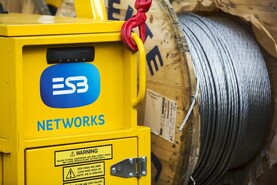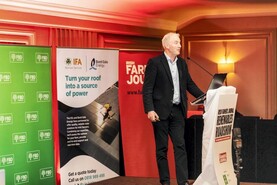Rural areas are at a disadvantage when it comes to supplying electricity back to the grid, a Teagasc expert has said.
Speaking at the Irish Farmers Journal’s Renewables Roadshow in Cork on Tuesday, Teagasc’s energy and rural development specialist Barry Caslin said farmers’ capacity to export electricity back to the grid all depends on geography.
“It’s a disadvantage sometimes of living in a rural area that your export capacity is very limited because of the transformer capacity.
“It can be disappointing and it’s down to the geography. It’s an issue in rural areas. If you were in an area where there is a very strong grid, you won’t have those issues,” he said.
Limited capacity
Caslin was responding to a question from the floor, where a Cork farmer outlined that both the solar panels on his home and farm have the same capacity to supply the grid.
The Teagasc specialist said farmers are often disappointed when they submit the necessary documentation to ESB, along with the €1,000 fee and find out their export capacity is limited.
“Many farmers have contacted me about this issue and said they don’t want to pay the price to upgrade the grid, because if they want to come up to 17kVA, they have to bear that cost themselves.
“Their argument is, why should we be the ones paying to upgrade the grid in this rural area?
“We’re re-enforcing the grid we’re trying to get renewable electricity back to, but should we be the ones that are penalised due to our geography?” he added.
Caslin spoke at the first of four Renewables Roadshow events being held around the country throughout the month of April.
Over 400 people were in attendance at the Cork event.






 This is a subscriber-only article
This is a subscriber-only article










SHARING OPTIONS: